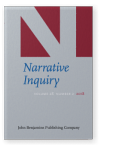Vol. 28:2 (2018) ► pp.301–329
The effect of the audience on the spoken narrative of Chinese children
This study investigated the influence of the audience and narrator’s gender on spoken narratives produced by Chinese children. Sixty typically developing five- and six-year-old children were evenly divided into three groups. Each group was assigned one audience, being a teacher, a same-age peer, or a younger peer. The children were asked to view a wordless picture book and retell the story to the audience. The results showed that the children tended to use more macrostructure elements when telling stories to same-age peers, with boys using more macrostructure elements than girls. Girls used more words and more events when narrating to younger peers, whereas boys used more words, more diverse words, and more evaluative language when narrating to teachers. In addition, the children marked temporality more in narratives to younger peers than to same-age peers. The findings indicated that the audience and narrator’s gender influence the narrative production of Chinese children.
Article outline
- Introduction
- Audience effect in children’s self-expression and communication
- Social relationships of Chinese children
- Narrative development in Chinese children
- Gender difference in narratives
- Gender role expectations in Chinese society
- Measures of narratives
- Current research
- Method
- Participants
- Design
- Materials
- Procedure
- Transcription
- Coding and measures
- Narrative macrostructure coding
- Narrative microstructure coding
- Story events coding
- Narrative evaluation coding
- Narrative temporality coding
- Narrative analyses reliability
- Data analysis
- Result
- The effect of the narrative audience on macrostructure analyses
- The effect of the narrative audience on microstructure analyses
- The effect of the narrative audience on story events
- The effect of the narrative audience on narrative evaluation
- The effect of the narrative audience on narrative temporality
- Discussion
- Narrative macrostructure dominance for same-age peer audiences
- Narrative temporality dominance for younger peer audiences
- Boys’ narrative TNW, NDW, and evaluations dominance for teacher audiences
- Girls’ narrative microstructure dominance for younger peer audiences
- Limitations and future directions
- Implications
- Conclusions
- Declaration of interest
- Acknowledgements
-
References
